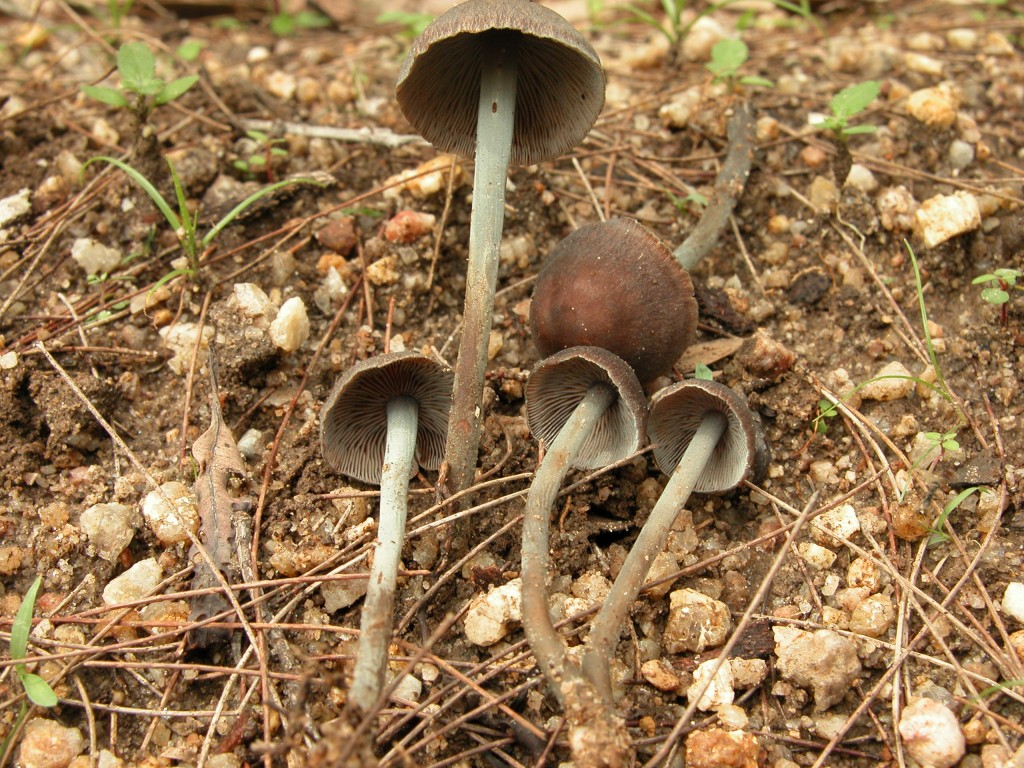Caesius The Day: A Colorful New Australian Mushroom
Posted in New Plant Discoveries on December 26, 2013 by Roy Halling
Roy Halling, Ph.D., is Curator of Mycology in The New York Botanical Garden‘s Institute of Systematic Botany. Among his primary research interests is the bolete (or porcini) family of mushrooms, especially those found in Southeast Asia and Australia.

Thirty years ago, I published a book, based on my Ph.D. thesis, describing collybioid mushrooms as they occur in the northeastern United States. These mushrooms, which have no real culinary value, are ecologically important because they decompose leaves and other plant litter in natural habitats. One of the common species in the northeast is called Gymnopus subnudus.
While exploring for bolete mushrooms (porcini family) on the Atherton Tableland in Queensland, Australia, I’ve often encountered over the last 20 years this unnamed collybioid mushroom with bluish green pigments. Even the cells at the edge of the gills are filled with the pigment.
Blue or green pigments in mushrooms are not that common, and collybioid fungi, which are found worldwide, are rather bland in pigmentation. The color spectrum is usually limited to brown, gray-brown, orange-brown, or dingy whitish-dirty yellow. So it was completely unexpected and jaw-dropping to see a blue-green one.
This species still awaits formal description and publication, but a provisional name is Gymnopus caesius, which translates to “Greenish Naked Foot.”

